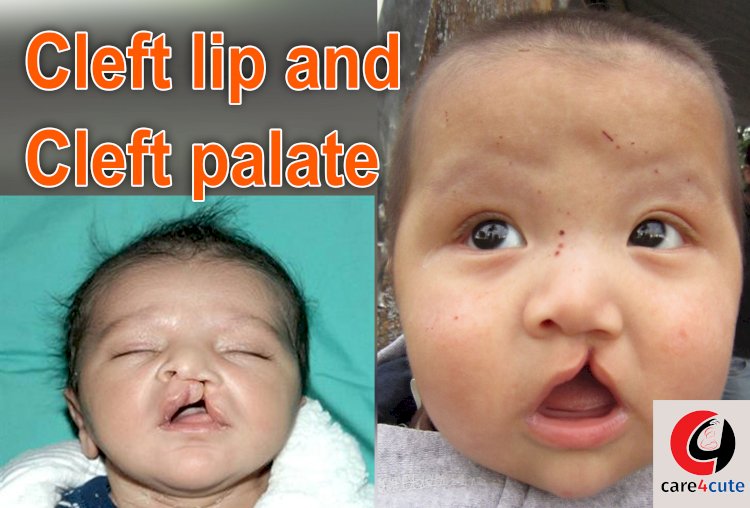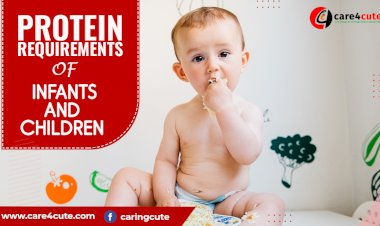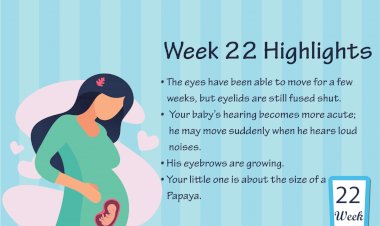Cleft Lip and Cleft Palate: Cause, Symptoms, Treatment

Cleft Lip and Cleft Palate
Cleft lip and cleft palate are congenital birth defects which results when baby’s lips or mouth do not form normally during intrauterine life.
Cleft lip is a condition in which upper lips are split cut and cleft palate is a condition in which roof of the mouth (palate) is split from behind.
Cleft lip and cleft palate are the most common birth defects. They most commonly occur as a isolated birth defect but sometimes also associated with many inherited genetic disorder or syndromes.
Diagnosis of cleft lip and cleft palate in newborn baby may be very upsetting for parents. , both these conditions are totally correctable. In most babies, a series of surgeries can restore normal function and achieve a more normal appearance with minimal scarring.
Symptoms:-
Usually, a split (cleft) in the lip or palate is immediately noticeable at birth. Cleft lip and cleft palate may seem as:
- A split in the lip and roof of the mouth (palate) that affects one or both sides of the face
- A split in the lip that appears as only a small notch in the lip or spread from the lip through the upper gum and palate.
- A split in the palate and facial look doesn’t change is less likely, a cleft occurs only in the muscles of the soft palate, which are at the back of the mouth and covered by the mouth's lining. This type of cleft is not noticeable at birth and sometimes may not be diagnosed until later when signs develop.
Signs and symptoms of cleft palate may follow:
- Difficulty during feeding.
- Difficulty swallowing, with potential for liquids or foods to come out the nose
- Nasal tone of voice
- Chronic ear infections
Causes:-
Cleft lip and cleft palate occur when tissues in the baby's face and mouth don't fuse completely. Usually, the tissues that form the lip and palate fuse together in the 1st trimester of pregnancy. But in babies with cleft lip and cleft palate, the fusion never takes place, leaving an opening (cleft).
The most cases of cleft lip and cleft palate are caused by an interaction of genetic and environmental factors. In many babies, the cause is unknown.
The mother or the father can contribute on genes that cause cleft, either alone or as part of a genetic syndrome that includes a cleft lip or cleft palate as one of its signs. In some cases, babies inherit a gene that cause to develop a cleft, and then an environmental factor actually causes the cleft to occur.
Risk factors:-
Several components may increase developing a cleft lip and cleft palate, including:
- Family history: Father or mother with a history of cleft lip or cleft palate will face a higher risk of having a baby with a cleft.
- Exposure to certain substances during pregnancy: Cleft lip and cleft palate may be more likely to occur in women who smoke cigarettes, drink alcohol or take certain medications during their pregnancy.
- Having diabetes: Some sources said that women who diagnosed with diabetes before pregnancy may have higher risk of having a baby with a cleft lip and cleft palate.
- Over weight gain during pregnancy: Some study said that babies born to obese women may have high risk of cleft lip and cleft palate.
Male child is more likely to have a cleft lip with or without cleft palate. Cleft palate without cleft lip is more common in female child.
Complications:-
Babies with cleft lip with or without cleft palate, if untreated may face some of challenges on basis of the type and severity of the cleft.
- Difficulty feeding: One of the most important concerns after birth is feeding. While most of babies with cleft lip can breast-feed easily but a baby with cleft palate may have difficulty in sucking.
- Ear infections and hearing loss: Babies with cleft palate are also at high risk of developing recurrent middle ear infections and lead to hearing loss.
- Dental problems: If the split extends through the upper gum, tooth development may be affected.
- Speech difficulties: The palate is used in forming sounds so the development of normal speech can be affected by a cleft palate. Speech may sound too nasal.
- Social Challenge: Children with clefts may have social, emotional and behavioral problems due to differences in looks and the stress of intensive medical care.
Prevention:-
If a baby is born with a cleft lip and palate then parents are concerned about the possibility of having another child with the same condition. While many cases of cleft lip and cleft palate can't be preventable, consider these steps to increase your understanding or lower the risk:
- Genetic counseling: If family history of cleft lip and cleft palate is present, then inform the doctor before planning of pregnancy. The doctor may refer to a genetic counselor that can help determine the risk of having child with cleft lip and cleft palate.
- Take multivitamins. If you're planning for family soon, consult your doctor for prenatal vitamins.
- Don't use tobacco or alcohol: Use of alcohol or tobacco during pregnancy increases the risk of having a baby with a birth deformity.
Diagnosis:-
Cases of cleft lip and cleft palate are noticed immediately at birth and don't need any special tests for diagnosis. Cleft lip and cleft palate can be diagnosed with ultrasound before the delivery.
Treatment:-
Treatment for cleft lip and cleft palate is essentially surgical. The aim of treatment is to improve the child's ability to eat, speak and hear normally and to achieve a normal facial cosmetic look.
Care for child with cleft lip and cleft palate involves a team of doctors and experts, including:
- Surgeons who specialize in cleft repair, such as plastic surgeons or ENTs
- Oral surgeons
- ENT doctors
- Pediatricians
- Pediatric dentists
- Orthodontists
- Nurses
- Auditory or hearing specialists
- Speech therapists
- Genetic counselors
- Social workers
- Psychologists
Treatment includes surgery to repair the deformity and further therapies to improve any related conditions.
Surgery
Surgery to correct cleft lip and palate is based on child's condition. After the cleft repair, doctor may recommend follow-up surgeries to improve speech or to further improve the appearance of the lip and nose.
Surgeries normally are performed in this order:
- Cleft lip is repaired in first 3 to 6 months of age.
- Cleft palate is repair between ages of 8 to 12 months.
- Follow-up surgeries if needed are performed between age 2 to late teen years of age.
Surgery can improve your child's facial look, quality of life, and ability to eat, breathe and talk normally. Possible risks of surgery include bleeding, infection, poor healing, widening or elevation of scars, sometimes damage to nerves, blood vessels or other structures.
Supportive Therapies
- Feeding strategies: - A special bottle nipple or feeder is available for such babies.
- Speech therapy is given to correct speech
- Orthodontic adjustments are needed for teeth and to assist bite
- Routine checkups and follow-ups by a pediatric dentist for tooth development and oral health
- Monitoring and treatment for ear infections.
- Hearing aids or other assistive devices for a child with hearing loss.
- Therapy with a psychologist to help the child with the stress of repeated medical procedures or other concerns.
For parents and family
When welcoming a baby with cleft lip and cleft palate into your family, keep these tips in mind:
- Don't blame yourself: Focus your energy to support and help your child during this condition.
- Control your emotions: It's completely normal to feel sad, overwhelmed and upset. But control your emotions.
You can support your child in following ways:
- Focus on your child not on the cleft.
- Point out positive things in other child that don't involve physical appearance.
- Help your child to gain confidence by allowing him or her to make decisions.
- Encourage confident body language, such as smiling and holding the head up with shoulders back.
- Keep the lines of communication open. So in case If teasing or self-esteem issues arise at school, your child will feel safe in talking to you about it, and you can help your child to overcome these issues.






































Comments (0)